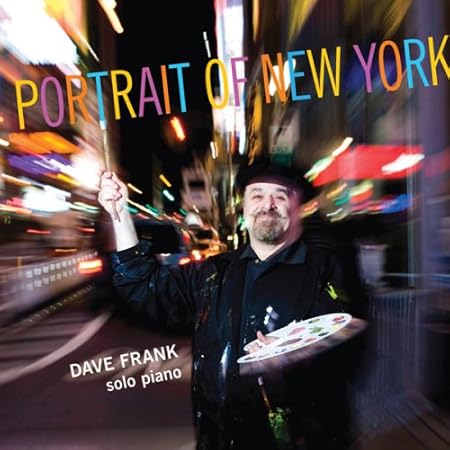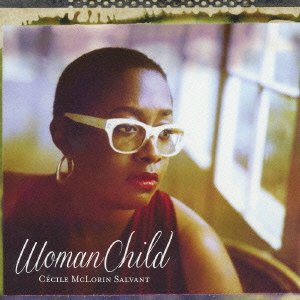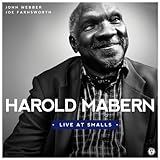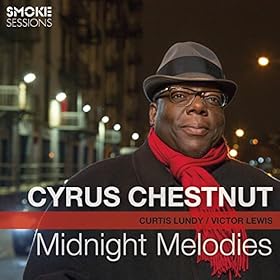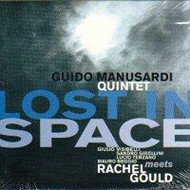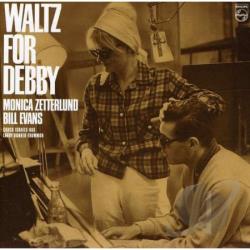Turn Out The Stars: Music Written or Inspired by Bill Evans

Dena DeRose
We Won't Forget You... - An Homage to Shirley Horn

By DustyGroove
Dena DeRose serves up a tribute to the great Shirley Horn – and works here with the kind of hip jazzy combo that Horn definitely would have loved! Like Horn, DeRose both sings and plays piano – plus a bit of Hammond on a few tracks too – and in addition to core trio instrumentation on bass and drums,t he set also features tenor work from Eric Alexander, trumpet from Jeremy Pelt, and baritone from Gary Smulyan – each players who drop in on certain tracks and make things shine wonderfully – like those key instrumental solos on later Shirley Horn records for Verve. Dena's own vocals and piano are great, though – perfectly timed to replicate that soulful swing that always set Shirley apart – a richness of feeling that's never overdone, and which always knows how to groove even at the most expressive moments. Titles include "Sunday In New York", "Big City", "Don't Be On The Outside", "Quietly There", "A Time For Love", "The Great City", and "Wild Is Love".
Christian Jacob

By Mark Corroto
Has an artist ever been characterized as a hopeful romantic? If not, then let us nominate Martin Wind, not as hopeless, but a bullish and inspiring romantic. His quartet and the 36- piece Orchestra Filarmonica Marchigiana tribute to pianist Bill Evans Turn Out The Stars marries his talents, both as a jazz bassist/bandleader and orchestral arranger.
Besides leading his own quartet, and working in trio with Bill Mays and Matt Wilson, and in the guitar/bass duos with Philip Catherine or Ulf Meyer, Wind is an in-demand sideman featured in multiple projects, including Matt Wilson's Arts & Crafts and bands led by, Ted Nash, Gary Smulyan, and Pete Mills, to name just a few. He released two stellar recordings in 2013, the CD Ulf Meyer and Martin Wind At Orpheus Theater (Laika) and an audiophile LP Remember October 13th (Edition Longplay).
Recorded live at the Theatro Rossini in Pesaro, Italy, Wind's quartet includes his regular partners, saxophonist Scott Robinson and pianist Bill Cunliffe, plus drummer Joe LaBarbera, who was Bill Evans' drummer in the pianist's final trio (1978-1980). This homage to Evans is enhanced by the gorgeous and passionate arrangements Wind wrote for conductor Massimo Morganti's orchestra. The disc opens with the title track, an overture in full bloom that gives way to the quartet's recitation of melody with Robinson's saxophone laying down velvety notes. Each piece— such as the spry rendition of "The Days Of Wine And Roses," performed by the quartet or full orchestra—is dexterously accomplished. Wind has the knack for extracting the sweetest juice for each piece written by Evans or written in tribute to the great one. La Barbera's composition "Kind Of Bill" opens with a piano and bowed bass duo, then lingers in that romantic atmosphere Evans loved to reach for.
Even in full orchestra, the quartet is never overwhelmed. The luscious arrangement of "Blue In Green" plays off of the contrasts of lightness and dark, the orchestra a pastoral landscape for the quartet to rollick. The tricky "Twelve Tone Tune Two" pushes the orchestra into a challenging interchange with La Barbera's drums and the coughing horn of Robinson. At the center of this gorgeous evening is the stalwart bass of Wind, the infrastructure upon which both a quartet and a very large orchestra is held by his passionate zeal.
Track Listing:
Besides leading his own quartet, and working in trio with Bill Mays and Matt Wilson, and in the guitar/bass duos with Philip Catherine or Ulf Meyer, Wind is an in-demand sideman featured in multiple projects, including Matt Wilson's Arts & Crafts and bands led by, Ted Nash, Gary Smulyan, and Pete Mills, to name just a few. He released two stellar recordings in 2013, the CD Ulf Meyer and Martin Wind At Orpheus Theater (Laika) and an audiophile LP Remember October 13th (Edition Longplay).
Recorded live at the Theatro Rossini in Pesaro, Italy, Wind's quartet includes his regular partners, saxophonist Scott Robinson and pianist Bill Cunliffe, plus drummer Joe LaBarbera, who was Bill Evans' drummer in the pianist's final trio (1978-1980). This homage to Evans is enhanced by the gorgeous and passionate arrangements Wind wrote for conductor Massimo Morganti's orchestra. The disc opens with the title track, an overture in full bloom that gives way to the quartet's recitation of melody with Robinson's saxophone laying down velvety notes. Each piece— such as the spry rendition of "The Days Of Wine And Roses," performed by the quartet or full orchestra—is dexterously accomplished. Wind has the knack for extracting the sweetest juice for each piece written by Evans or written in tribute to the great one. La Barbera's composition "Kind Of Bill" opens with a piano and bowed bass duo, then lingers in that romantic atmosphere Evans loved to reach for.
Even in full orchestra, the quartet is never overwhelmed. The luscious arrangement of "Blue In Green" plays off of the contrasts of lightness and dark, the orchestra a pastoral landscape for the quartet to rollick. The tricky "Twelve Tone Tune Two" pushes the orchestra into a challenging interchange with La Barbera's drums and the coughing horn of Robinson. At the center of this gorgeous evening is the stalwart bass of Wind, the infrastructure upon which both a quartet and a very large orchestra is held by his passionate zeal.
Track Listing:
Turn Out The Stars; My Foolish Heart; The Days Of Wine And Roses; Jeremy; Memory Of Scotty; Kind Of Bill; Blue In Green; Twelve Tone Tune Two; Goodbye Mr. Evans.
Personnel:
Personnel:
Martin Wind: bass; Scott Robinson: tenor saxophone, C melody saxophone; Bill Cunliffe: piano; Joe La Barbera: drums; Orchestra Filarmonica Marchigiana - Massimo Morganti: conductor.
Dena DeRose
We Won't Forget You... - An Homage to Shirley Horn

By DustyGroove
Dena DeRose serves up a tribute to the great Shirley Horn – and works here with the kind of hip jazzy combo that Horn definitely would have loved! Like Horn, DeRose both sings and plays piano – plus a bit of Hammond on a few tracks too – and in addition to core trio instrumentation on bass and drums,t he set also features tenor work from Eric Alexander, trumpet from Jeremy Pelt, and baritone from Gary Smulyan – each players who drop in on certain tracks and make things shine wonderfully – like those key instrumental solos on later Shirley Horn records for Verve. Dena's own vocals and piano are great, though – perfectly timed to replicate that soulful swing that always set Shirley apart – a richness of feeling that's never overdone, and which always knows how to groove even at the most expressive moments. Titles include "Sunday In New York", "Big City", "Don't Be On The Outside", "Quietly There", "A Time For Love", "The Great City", and "Wild Is Love".
Christian Jacob
Beautiful Jazz: A Private Concert

By Dan Bilawsky
There was a time when pianist Christian Jacob thought he'd be making his mark as a classical pianist. That's perfectly understandable considering the fact that he was playing piano at age four and studying at the Metz conservatory at age six. By the time he was in college, studying at the Paris Conservatory, he was winning awards and prepping for piano competitions.
Jacob was following the prescribed course that classical piano hopefuls typically follow, but his destiny was with jazz. Jacob was taken with the work of Dave Brubeck, Oscar Peterson and other jazz luminaries early on, but it took him some time to realize that this music was his true calling.
Nowadays, it's hard to imagine that Christian Jacob could've ever doubted that his fate was tied to jazz. As a sideman, Jacob has worked with a long list of greats, from trumpeter Maynard Ferguson to vibraphonist Gary Burton to arranger/bandleader Bill Holman. He's inextricably linked to the acclaimed Tierney Sutton Band, working side by side with the nominal leader on her incredibly well-received albums, and he's gained some traction as a leader through his work with the Christian Jacob Trio. He's even worked with symphony orchestras on occasion. In short, he's done a hell of a lot for a guy who didn't figure on a career in jazz, but he's never put out a solo piano disc; that is, until now.
Beautiful Jazz: A Private Concert is Jacob's love letter to the genre that whisked him away from the waiting arms of the classical world. He tackles old favorites here, revisiting and/or revising some of the very material that drew him toward jazz in the first place. Jacob brings a sense of wonder to "How Long Has This Been Going On?," tackles "That's All" in seven, muses on "My Romance," and delivers an information-dense "Surrey With The Fringe On Top." Jacob also tips his cap to pianist Bill Evans with "I'm Old Fashioned," references his classical upbringing through Stravinsky's "Etude No. 4 in F# Major," and delivers a wonderful "September Song" arrangement that's devoid of improvisation.
This whole program was recorded at a private concert at Zipper Hall in Los Angeles, with Jacob playing on a Hamburg Steinway Model D Grand. Both the scene and the instrument helped to shape this album, but it's Jacob who delivers on the promise of the title. Beautiful Jazz it is.
Track Listing:

By Dan Bilawsky
There was a time when pianist Christian Jacob thought he'd be making his mark as a classical pianist. That's perfectly understandable considering the fact that he was playing piano at age four and studying at the Metz conservatory at age six. By the time he was in college, studying at the Paris Conservatory, he was winning awards and prepping for piano competitions.
Jacob was following the prescribed course that classical piano hopefuls typically follow, but his destiny was with jazz. Jacob was taken with the work of Dave Brubeck, Oscar Peterson and other jazz luminaries early on, but it took him some time to realize that this music was his true calling.
Nowadays, it's hard to imagine that Christian Jacob could've ever doubted that his fate was tied to jazz. As a sideman, Jacob has worked with a long list of greats, from trumpeter Maynard Ferguson to vibraphonist Gary Burton to arranger/bandleader Bill Holman. He's inextricably linked to the acclaimed Tierney Sutton Band, working side by side with the nominal leader on her incredibly well-received albums, and he's gained some traction as a leader through his work with the Christian Jacob Trio. He's even worked with symphony orchestras on occasion. In short, he's done a hell of a lot for a guy who didn't figure on a career in jazz, but he's never put out a solo piano disc; that is, until now.
Beautiful Jazz: A Private Concert is Jacob's love letter to the genre that whisked him away from the waiting arms of the classical world. He tackles old favorites here, revisiting and/or revising some of the very material that drew him toward jazz in the first place. Jacob brings a sense of wonder to "How Long Has This Been Going On?," tackles "That's All" in seven, muses on "My Romance," and delivers an information-dense "Surrey With The Fringe On Top." Jacob also tips his cap to pianist Bill Evans with "I'm Old Fashioned," references his classical upbringing through Stravinsky's "Etude No. 4 in F# Major," and delivers a wonderful "September Song" arrangement that's devoid of improvisation.
This whole program was recorded at a private concert at Zipper Hall in Los Angeles, with Jacob playing on a Hamburg Steinway Model D Grand. Both the scene and the instrument helped to shape this album, but it's Jacob who delivers on the promise of the title. Beautiful Jazz it is.
Track Listing:
How Long Has This Been Going On; That's All; It Might As Well Be Spring; Etude No. 4 In F# Major; My Romance; Surrey With The Fringe On Top; Tea For Two; I'm Old Fashioned; One Note Samba; Body And Soul; September Song; Giant Steps; Till The Clouds Roll By.
Personnel: Christian Jacob: piano.
Jacob Young
Forever Young

By John Kelman
While all groups aim for the kind of collective chemistry that can make, for example, five people speak with a single voice, how they get there can vary significantly. In some cases there's instantaneous chemistry; in other cases, it comes from pre-existing relationships amongst various permutations and combinations of its members; in still other instances it is something that simply develops over time. On Forever Young, guitarist Jacob Young leverages both the relationships that have come before amongst the members of his quintet and a clear and immediate connection shared by its five members. A fine addition to an ECM discography that began with Evening Falls (2004) and continued with Sideways (2008)—two recordings that featured a completely different lineup—Forever Young leverages the strengths of what came before while simultaneously asserting its own independence.
If anything, Forever Young provides Young with even greater freedom than on his previous ECM outings, where he was the sole chordal instrument. Here, Young recruits pianist Marcin Wasilewski's trio—a group that, despite being on the shy side of forty, has been together for two decades and has, consequently, evolved both a chemistry and a language all its own, both in collaboration with trumpeter Tomasz Stanko on recordings including Suspended Night (ECM, 2004) and Lontano (ECM, 2006), as well as with its own triptych of superlative standalone releases (also on ECM), the most recent being Faithful (2011).
With a second chordal instrument in the mix, Young is relieved of the responsibility of constantly supporting his fellow band mates, though it's not as if he's abandoned the role entirely; in fact, one of Forever Young's biggest strengths is how Young and Wasilewski manage to continually complement each other without ever running into one another, a rare quality also shared by guitarist John Abercrombie and pianist Marc Copland on 39 Steps (ECM, 2013). On the deceptive "Sofia's Dance"—deceptive because, although it's largely based on a simple, two-chord Phrygian vamp with a theme that begins as a similarly straightforward melody, its conclusion adds an unexpected Mid-Eastern-tinged twist—Young's nylon-string guitar meshes empathically with Wasilewski's accompaniment during saxophonist Trygve Seim's characteristically taciturn solo, and gently underscores the pianist's own feature.
But the chemistry doesn't stop there. Seim—an ECM leader in his own right, with a slowly growing discography that includes the masterful large ensemble music of Sangam (2005) and more intimate duo date with pianist Andreas Utnem, Purcor: Songs for Saxophone and Piano (2010)—has a shared history with Young on the guitarist's pre-ECM recordings Pieces of Time (Curling Legs, 1997) and Glow (Curling Legs, 2001), as well as with Wasilewski and his trio's bassist, Slawomir Kurkiewicz, as members of drummer Manu Katche's quintet heard on Playground (ECM, 2007).
The intervening years since Sideways have seen Young demonstrate a much broader, more electrified purview, in particular in his collective trio with expat British keyboardist Roy Powell and Norwegian drummer Jarle Vespestad (Tord Gustavsen Quartet, Farmers Market), first with Anthem (PVY, 2011) and, more recently, with the trio renamed as InterStatic and releasing even more extreme music on the upstart British label RareNoiseRecords. But here, on Forever Young, while the guitarist does mix some electric guitar work with the acoustic instruments that have helped to define his previous two ECM recordings, like Evening Falls and Sideways, it's a warmer, hollow body tone that continues to assert the importance of the late Jim Hall on Young's formative years.
While there are hints of the darkness and melancholy that made his previous ECM outings so appealing, with Wasilewski's trio in tow Forever Young also demonstrates a more outgoing nature on tracks like "Bounce," where Young's muted electric guitar chords drive a change-heavy song with a brighter disposition. "We Were Dancing" follows, with Young employing a similar supporting approach before opening up into one of his most impressive solos of the set, a slightly tart-toned electric feature that allows the guitarist's virtuosic abilities freer rein.
If Forever Young proves anything, it's that the tendency to whitewash anything coming out of Norway as "Nordic Cool" is just that: whitewashing. Young may adhere to a generally sparer approach with his ECM recordings, but if there's a single word to describe his music it's warm, whether it's his own tone, the refined elegance of Wasilewski's trio or the patiently unfolding energy of Seim's playing throughout the set. It's also a recording whose language speaks clearly to at least some adherence to the American tradition, especially on pieces like the brighter "1970" and "Time Changes."
For those unfamiliar with Young's extracurricular activities, Forever Young demonstrates an ability to simmer in a way that his previous ECM recordings did not. It also represents a first outing by a quintet with plenty of potential; hopefully six years won't have to pass before this intimate yet delicately expressionistic quintet can once again reconvene.
Track Listing:
Personnel: Christian Jacob: piano.
Jacob Young
Forever Young

By John Kelman
While all groups aim for the kind of collective chemistry that can make, for example, five people speak with a single voice, how they get there can vary significantly. In some cases there's instantaneous chemistry; in other cases, it comes from pre-existing relationships amongst various permutations and combinations of its members; in still other instances it is something that simply develops over time. On Forever Young, guitarist Jacob Young leverages both the relationships that have come before amongst the members of his quintet and a clear and immediate connection shared by its five members. A fine addition to an ECM discography that began with Evening Falls (2004) and continued with Sideways (2008)—two recordings that featured a completely different lineup—Forever Young leverages the strengths of what came before while simultaneously asserting its own independence.
If anything, Forever Young provides Young with even greater freedom than on his previous ECM outings, where he was the sole chordal instrument. Here, Young recruits pianist Marcin Wasilewski's trio—a group that, despite being on the shy side of forty, has been together for two decades and has, consequently, evolved both a chemistry and a language all its own, both in collaboration with trumpeter Tomasz Stanko on recordings including Suspended Night (ECM, 2004) and Lontano (ECM, 2006), as well as with its own triptych of superlative standalone releases (also on ECM), the most recent being Faithful (2011).
With a second chordal instrument in the mix, Young is relieved of the responsibility of constantly supporting his fellow band mates, though it's not as if he's abandoned the role entirely; in fact, one of Forever Young's biggest strengths is how Young and Wasilewski manage to continually complement each other without ever running into one another, a rare quality also shared by guitarist John Abercrombie and pianist Marc Copland on 39 Steps (ECM, 2013). On the deceptive "Sofia's Dance"—deceptive because, although it's largely based on a simple, two-chord Phrygian vamp with a theme that begins as a similarly straightforward melody, its conclusion adds an unexpected Mid-Eastern-tinged twist—Young's nylon-string guitar meshes empathically with Wasilewski's accompaniment during saxophonist Trygve Seim's characteristically taciturn solo, and gently underscores the pianist's own feature.
But the chemistry doesn't stop there. Seim—an ECM leader in his own right, with a slowly growing discography that includes the masterful large ensemble music of Sangam (2005) and more intimate duo date with pianist Andreas Utnem, Purcor: Songs for Saxophone and Piano (2010)—has a shared history with Young on the guitarist's pre-ECM recordings Pieces of Time (Curling Legs, 1997) and Glow (Curling Legs, 2001), as well as with Wasilewski and his trio's bassist, Slawomir Kurkiewicz, as members of drummer Manu Katche's quintet heard on Playground (ECM, 2007).
The intervening years since Sideways have seen Young demonstrate a much broader, more electrified purview, in particular in his collective trio with expat British keyboardist Roy Powell and Norwegian drummer Jarle Vespestad (Tord Gustavsen Quartet, Farmers Market), first with Anthem (PVY, 2011) and, more recently, with the trio renamed as InterStatic and releasing even more extreme music on the upstart British label RareNoiseRecords. But here, on Forever Young, while the guitarist does mix some electric guitar work with the acoustic instruments that have helped to define his previous two ECM recordings, like Evening Falls and Sideways, it's a warmer, hollow body tone that continues to assert the importance of the late Jim Hall on Young's formative years.
While there are hints of the darkness and melancholy that made his previous ECM outings so appealing, with Wasilewski's trio in tow Forever Young also demonstrates a more outgoing nature on tracks like "Bounce," where Young's muted electric guitar chords drive a change-heavy song with a brighter disposition. "We Were Dancing" follows, with Young employing a similar supporting approach before opening up into one of his most impressive solos of the set, a slightly tart-toned electric feature that allows the guitarist's virtuosic abilities freer rein.
If Forever Young proves anything, it's that the tendency to whitewash anything coming out of Norway as "Nordic Cool" is just that: whitewashing. Young may adhere to a generally sparer approach with his ECM recordings, but if there's a single word to describe his music it's warm, whether it's his own tone, the refined elegance of Wasilewski's trio or the patiently unfolding energy of Seim's playing throughout the set. It's also a recording whose language speaks clearly to at least some adherence to the American tradition, especially on pieces like the brighter "1970" and "Time Changes."
For those unfamiliar with Young's extracurricular activities, Forever Young demonstrates an ability to simmer in a way that his previous ECM recordings did not. It also represents a first outing by a quintet with plenty of potential; hopefully six years won't have to pass before this intimate yet delicately expressionistic quintet can once again reconvene.
Track Listing:
I Lost My Heart To You; Therese's Gate; Bounce; We Were Dancing; Sofia's Dance; Comeback Girl; 1970; Beauty; Time Changes; My Brother.
Personnel:
Personnel:
Jacob Young: guitars; Trygve Seim: tenor and soprano saxophones; Marcin Wasilewski: piano; Slawomir Kurkiewicz: double bass; Michal Miskiewicz: drums.

